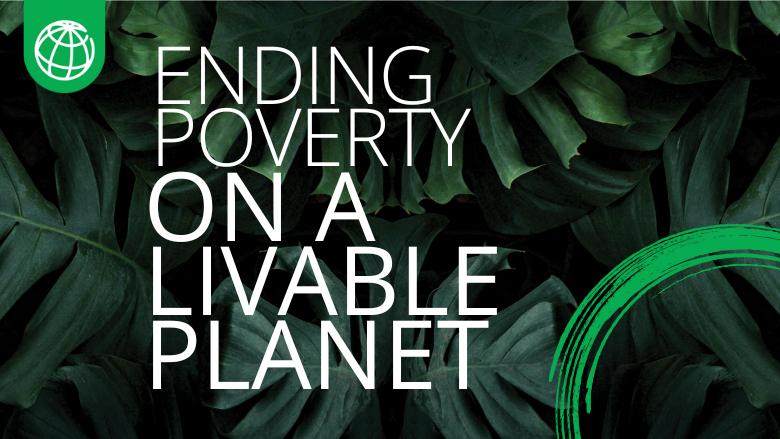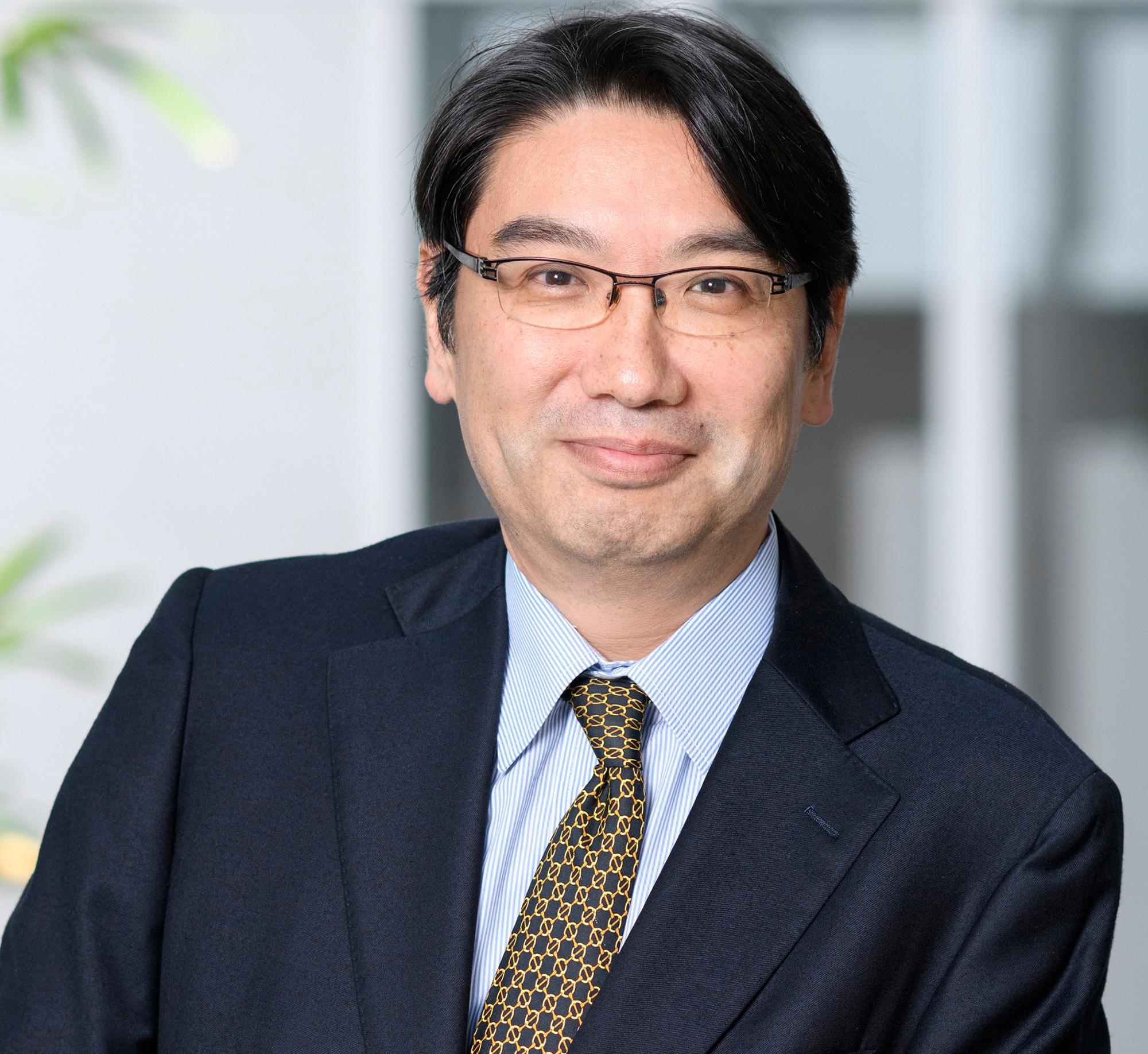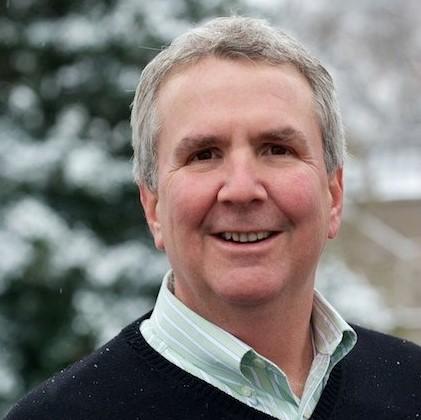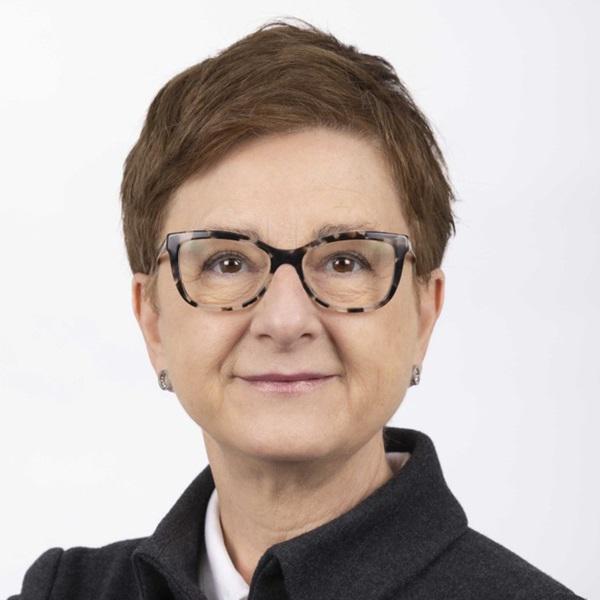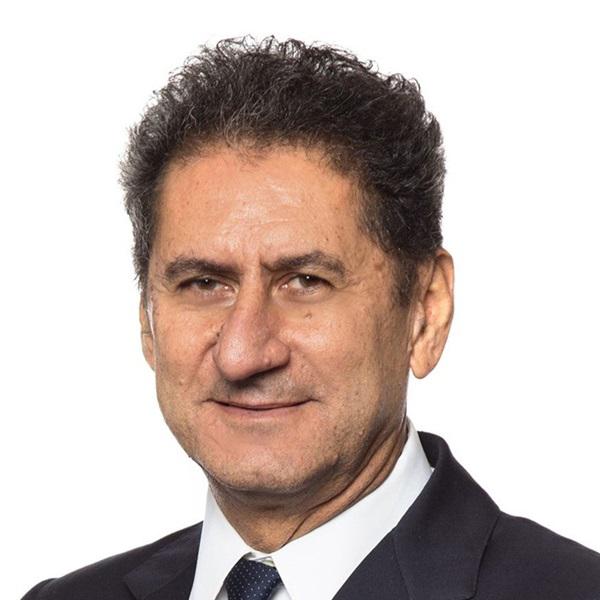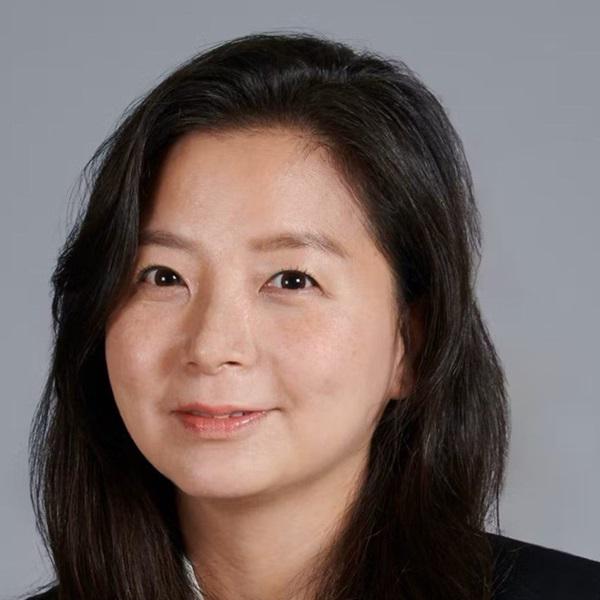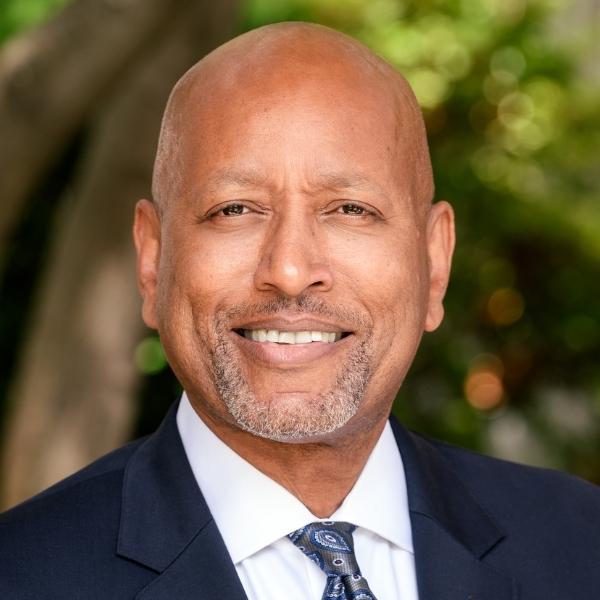[Hiroshi Matano] Distinguished guests, good morning. I’m very happy to be here, and there are so many people coming to this venue, so thank you very much for that. The World Bank Group is invested in supporting the private sector in this effort to curb carbon emissions. Low and middle-income countries need billions of dollars in investment to fight climate change and transition to the green economy. Carbon credits have a potential to mobilize substantial private capital in support of climate action and development. Unfortunately, these markets are facing issues. These issues have resulted in significant trust deficit, which has hindered market participation and slowed decarbonization efforts. The World Bank Group has been supporting countries by providing technical assistance and financing to enable the generation and state of high-integrity carbon credits. As part of this effort, MIGA has engaged extensively with carbon market participants to identify the role of guarantees can serve in catalyzing private investment. Our market feedback has pointed to the need for MIGA guarantees to mitigate key risks associated with delivery, use, and quality of carbon markets. However, a lack of legal clarity on carbon ownership rights and recourse measures has made it difficult for MIGA to get involved. As a result, MIGA, working with our partners, has developed a Letter of Authorization template to better define carbon rights for private investors. The LoA is designed to mitigate political risk and will secure insurable rights which can be covered by MIGA guarantees. It is also part of the LoA package that the World Bank is launching at COP this year. We recognize the participation in carbon markets require a clear country-level governance framework for operationalizing carbon markets. The MIGA LoA and the LoA package, broadly, will be a key component of enabling countries to accelerate private investment to support carbon projects. This is just the beginning of our effort to support carbon projects to excite the private investment in developing countries. So, thank you for your support. Now, I’d like to invite Dirk Forrister, President of CEO of International Emission Trading Association, to the podium to give some remarks on the state of legal arrangements and bottlenecks for Article 6, carbon markets. Thank you. [Applause]
[Dirk Forrister] Thank you, Hiroshi. Thank all of you for joining us this morning for a discussion on something that might sound really esoteric, although I’m looking around the room and seeing some familiar lawyer faces, so it’s not so esoteric to lawyers and bankers. But for a lot of the average folks here at this COP, they don’t necessarily think about the risks that are being created in some of the discussions that are underway on how to take carbon markets forward. We worked really hard collectively across the carbon market community with the World Bank institutions and other friends in attaining an Article 6 in the Paris Agreement because we recognized to actually stimulate the amount of private sector investment that’s required for reaching or staying within the temperature goals, we needed models that could actually be familiar with the private sector, that could inspire companies to invest with confidence, and frankly, to have that cross-border trade that enables us to attach the opportunities for mitigation with the high-cost areas to achieve a more economically efficient result. We did a project with the World Bank Group, going back about four years ago, looking at the economics of Article 6 after it was passed. That research, using modeling from the University of Maryland in Washington, DC, and a modeling team from one of the US national labs, it showed that you could cut the cost of meeting your existing NDCs in half through the use of optimal use of carbon markets, cross-border carbon markets. If you deployed that capital again into further mitigation, you could actually achieve twice as much mitigation. It really showed that it is this type of cooperation that matters the most. I remember a Norwegian negotiator telling me as we were entering the Paris negotiations, “If we’re not here to talk about what we can do together across borders, why do we need to come to COP?” You can talk about what you’re doing on your own at home, and we can dial it in. What you need to come to COP for is to talk about how to work together. I was reflecting earlier today on the origins, at least my origins, on these topics. Many of us worked in the CDM markets of the past. The risks of letters of approval in that era were quite low because you could get the letters of approval and you knew the country was going to stick with it because they had the incentive for achieving or for the receipt of the revenue that was coming in. But when we got to Article 6, and the notion of carbon accounting, where if you export, you actually have to reflect it in your books, the game changed quite a bit. There’s a bit more risk for all involved. I remember an event, this is probably four or five years ago now, when I first met MIGA, and we were talking about the need for someone to step up and cover the risks of a government changing its mind. At that point in time, it didn’t really seem like it was all that material, but we’re talking about things like, can you develop a product where there’s no actuarial history? Can you develop an insurance product? But it came out as one of the top vote getters amongst the private sector participants in this meeting that they viewed this as a material risk and being able to invest at scale. Now, as we move forward in time, and we’re here in Baku, one of the negotiating items is still on Article 6, which some folks on the panel may be able to speak to, Benedict. One of the issues is what are the terms and conditions for a country changing its mind, and what would that have on the impact? Well, anytime you introduce that risk, it basically just means the pricing dynamic changes quite a bit. That country may not get as much of the revenue in a particular transaction if it’s loaded with risk because somebody’s going to have to be paid to take on that risk. So, the more we can standardize the approaches to this, and frankly, in these negotiations, to reduce the range of what the risks are, but also to create models like we see in the LoA that’s being premiered today, something that we at IETA are encouraged by, welcome it. We really want to see more of this out there. It really does bring the focus on what does it take to inspire the confidence for businesses to invest at scale. If we are in a crisis, if we do have an emergency, if there’s urgency to the issue, we need to get this thing rolling and get it solved here in Baku. Again, really welcome the LoA that’s being launched today. I know a lot of my members have had inputs into this, so thanks for your openness in taking account of our comments, but really eager to move into the discussion now to learn more about what we can expect from this. With that, Ethiopis, I’m going to pass the baton to Ethiopis Tafara from MIGA to lead this panel discussion of people that know a lot more about it than me. Thank you. [Applause]
[Ethiopis Tafara] Thank you, Dirk, for the fantastic scenes and good morning, everyone. Welcome to this panel, which is the launch of the MIGA LoA. The fundamentals of markets are similar with those that existed for thousands of years. You need a meeting place for buyers and sellers. You need recognized ownership rights, and most importantly, you need trust. Buyers need to have the confidence of what they’ve purchased and that it will fulfill the purpose for which they bought it. Sellers must trust that the market will provide them with fair compensation, and both sides need to know how disputes will end up getting resolved. And for 35 years, MIGA has been in the business of fostering this essential trust. In this spirit, we spent the past nine months engaging with stakeholders across the market and thinking about how is it we could actually address the political risks associated with the revocation of use and delivery of carbon credits. The result is this LoA. It creates an enforceable right against which we are prepared to provide insurance using the suite of products that are available to us under this World Bank Group Guarantee Platform, which was launched on July first. While we can pay out a claim in the event there is a revocation of the right to use or deliver carbon credits, our secret sauce, our special ability, is actually being able to step in anytime the government may potentially not be prepared to meet its commitments, and actually get them to meet those commitments by virtue of the relationship we have. In our history, we’ve supported about a thousand projects. 200 have been in trouble, but we’ve only ever paid 11 claims. That means 189 times we’re able to step in and resolve the issue so that the government continues to meet its commitment. We have the pleasure today of gathering a number of the leaders of the stakeholders we’ve engaged with over the course of the past nine months to give you a sense of how they view this LoA or the utility they see in it, and to give a sense of how they expect to be able to benefit from the existence of this Letter of Authorization template. Let me introduce the panel. Let me start with Margaret Kim all the way at the very end, who’s Chief Executive Officer of Gold Standard, a respected certification body known for setting rigorous criteria to ensure that carbon offsets projects deliver verified measurable impacts. Next to her is Benedict Chia, who’s Director-General of the National Climate Change Secretariat of Singapore. Singapore has taken a leading role in advancing climate policy from pioneering Asia’s first carbon tax to fostering regional cooperation on carbon markets. The National Climate Change Secretary coordinates the country’s climate policies and plays a crucial role in shaping Singapore’s approach to sustainable development and carbon pricing. Next to him is Dr. Marie Owens Thomsen, who is Senior Vice President and Chief Economist of the International Air Transport Association, which plays a critical role in the aviation industry’s journey towards sustainability. IATA is working to support effective carbon market mechanisms to help the aviation sector meet its ambitious climate goals. Last but not least, right next to me is Francesco La Camera from the International Renewable Energy Agency, or IRENA, which is an international organization dedicated to accelerating the adoption of renewable energy worldwide. IRENA is working in promoting renewable solutions directly and intersect with carbon markets as renewables are key to achieving emissions reductions that underpin these markets. Each of them is going to bring a unique perspective to the discussion on the LoA, but in the interest of time, I’m going to dive right in and start with Marie, if you don’t mind. Air transport is an important enabler. You and I talked about the importance of aviation in connecting people and connecting markets, and it’s fundamental to economic growth, but it also contributes to GHG emissions. In 2016, governments adopted CORSIA to stabilize emissions from international aviation. The question to you is, what is the biggest challenge you see with CORSIA compliance?
[Marie Owens Thomsen] Well, it seems to me, pure speculation, of course, on my part, that the left hand didn’t really speak to the right-hand when ICAO, so our UN Body Force Civil Aviation indeed created CORSIA in 2016, as you just said. Then this group of people has progressed in its own way. What we are left with today is an obligation put upon us by ICAO, which we welcome. But the countries on the other side, they are not obliged to release these credits for us. They have optionality, we have an obligation. The countries have optionality. We’re quite literally here to make friends and seduce everybody to the best of our abilities and convince you guys and all the countries involved that it’s definitely the smart thing to do, to release credits in favor of CORSIA’s success and in favor of aviation’s decarbonization. That’s our challenge, and we are so absolutely deliriously happy to be able to partner in some way with MIGA and help on our side to facilitate countries to release these credits by supporting with various documentation.
[Ethiopis Tafara] Picking up on that, how do you see the LoA facilitating CORSIA compliance? In what way do you see this template being used as part of the CORSIA regime?
[Marie Owens Thomsen] Well, I think that in our experience, in our various conversations with countries, many of them are discovering this conundrum that aviation faces. There’s, first of all, an educational mission. They need to be aware that we have this situation, and often they discover that when we approach them. Then, when the conversation deepens, we realize that they do not necessarily know how to go about it. They do not necessarily know the infrastructure that they we need to set up or find somewhere else. This is where we try to, of course, by your inspired leadership, to provide that information, and facilitate, and hold hands in this process so that we can reach these goals faster.
[Ethiopis Tafara] Thank you. Thank you, Marie. Benedict, I’m going to turn to you next to get the sovereign perspective and ask you, what role do you see for insurance products in Singapore’s Article 6 approaches?
[Benedict Chia] Well, thanks so much for the question. Singapore has been pioneering and we have been advancing Article 6 collaborations. We have got signed agreement with more than 20 other countries. We have operationalized one in the midst of operations in other one and with more in a pipeline. Through all our various discussions, creating the overarching framework where two governments lay out the rules, and the modalities of cooperation, and then enabling private sector companies to come in, one of the things that has struck us is that, if you look at the entire time frame from when a company needs to invest in a project and when the credits are eventually generated, it is quite long. Before you can even generate credits, you need an underlying mitigation emissions reduction project, and that requires upfront investment. In fact, even before the investment, you need to do pre-feasibility studies. Depending on the scale of the project, some of these pre-feasibility studies can cost up to 1 million US dollars, which is not trivial. Then afterwards, you invest in the project, the project happens, the abatement happens, and then credits are being generated. But you don’t get the credits until after the emissions reductions are then being verified. If you look at the entire lifespan from the start whereby the pre-feasibility study all the way until the credits comes on hand, it can be a very long period of time, depending on the project, three all the way up to six years. It’s not uncommon itself. If not, even longer. Within this very long time span, there are many things that can go wrong. The project might not deliver the abatement you expect. There might be political risks, there might be changes in government, there might be changes in regulation, there might be natural hazards risks, many of which are being exacerbated as we feel more acutely the impact of climate change. I think this is where we see insurance products coming in to play a very, very important role. The other thing that I think we have been asked many times and we have looked at quite carefully is, under what circumstances would insurance products be actually useful? Two things come out. One is that for it to be useful, the insurance pool needs to be large. If two countries or three countries come together and pool their risk together, it’s not going to be as effective as 10 to 20 countries coming together. The other factor which is important is that the risk that is pooled should not be systematically correlated to each other. Because if not, it’s the same risk. You’re paying out, at the same time, you’re not diversifying the risk. You need sufficiently differentiated pools so that the risks are not correlated; and therefore, it allows you to better manage and spread the risk out itself. These two things actually mean that working with an organization like MIGA and the World Bank Group is absolutely critical because only MIGA and the World Bank Group have the ability to convene and to pool together, firstly, a large risk pool, secondly, a risk pool that is sufficiently, systematically less correlated. I wouldn’t say it’s entirely uncorrelated, but the links need not be strong. Then you get a very efficient risk product itself. You get a very cost-effective insurance product. Thanks.
[Ethiopis Tafara] Thank you, Benedict. You anticipated my second question to you. I’m leaving more time for us to actually questions from the audience, but before that, Margaret, I’m going to turn to you. Gold Standard has traditionally served the voluntary carbon market, but in the past few years, you’ve pivoted to also support transactions under Article 6. Can you say more about why you’ve made the shift towards Article 6 units, and how expectations and market requirements change when managing these units?
[Margaret Kim] Thank you. Gold Standard was established to label CDM credits 20 years ago. To make sure that CDM credits have robust sustainable development impact attached to it. That was the origin of how Gold Standard came about. Obviously, we were active in the voluntary carbon market. I wouldn’t say it was a shift per se, but I’m going to put myself in the shoes of a project developer because I’m not developing a project with a view of, I want to access voluntary carbon market today, or I want to access Article 6 today, I start the project because it’s a brilliant concept that can mitigate climate impact, that can generate livelihood improvements, that can generate jobs. That’s always in the minds of the project developers, how concept starts. If I do that in this changing, very diversified market discussion, my role is to make sure my project is ready. Ready for whether that’s CORSIA, ready for Article 6, ready for… In case voluntary carbon market or whatever market there may be or domestic markets. How do I do that? Then, I put myself into the role of a government. Now I’m getting bombarded by visits by project developers saying, “I want a Letter of Authorization. One standard said this, the other standard said this, or an expert said this, and these are the different templates.” Then the government sits and says, “We also have a template.” There’s a lot of myth and misinformation and misguidance in the market. That’s why I really appreciate World Bank’s leadership in introducing that Letter of Authorization template. Further, if we really want to have these projects be ready for those markets, we really need consolidated, harmonized instructions on how to do that. And that risk that Dirk talked about, how do we make sure these projects are ready and de-risk or have that clarity on the risk part? I’m very much looking forward to World Bank’s next moves and next developments in providing that clarity. At the same time, making sure that the governments have the capacity to access this. I’m quite inspired by what Ethiopis said. On 1,000 projects and 200 of those projects, and you only paid out 11 claims. I mean, that’s the kind of reassurance the market needs today. So, looking forward to those future developments.
[Ethiopis Tafara] Sounds like a little bit of pressure there. Thank you, Margaret. Francesco, we’re going to turn to you. IRENA, you’ve recently issued a report on Africa’s renewable energy market, underlining the fact that only 2% of global investments in renewable energy in the last two decades were made in Africa, with significant regional disparities. This is also the trend in 2023, if I understand correctly. We all agree this needs to change. Obviously, IRENA is working to drive that change. Any sense as to how we might be able to combine guarantees under a LoA or otherwise with innovative tools and solutions to increase investment in the African region?
[Francesco La Camera] First of all, thanks for having me and so, IRENA, in this debate. I always thought in the last nine years that I have to pay the price for what we did with Article 6 in Paris. I think it’s been the article in any legal agreement that was written in the worst way possible. The reason in some way was quite simple because we were moving from a mandatory system in some way over the Annex I of the Kyoto Protocol to a voluntary scheme. At that time, there was also a very strong ideological approach to the rewriting of Article 6, we cannot price in nature. At the end, the compromise that came out was an article that was difficult. It’s difficult to read it and put in practice. I think when we started talk with him on this, I took it as a challenge to try to overcome the difficulties in reading and applying that article. We have seen that the first decision that has been taken into this COP has been to welcome the recommendation of the advisory board on Article 6.4. It seems that also in the COP context, things are moving. Coming to this new approach, and that could be systematic from all the World Bank Group, thanks to the leadership of… We see that it’s a great opportunity. This is an instrument that can really have an impact on closing the gap between the projects and the funding. We have been starting work in Africa also with a new initiative. We say that we want to rewrite the way international cooperation works. We have this initiative for Africa that’s led by an African country. We have now under our hands a pipeline of projects that are in a good stage of advancement. It’s 2.6 billion of projects. I think this will be the first moment where we will try to understand how far we can go with these tools. So, put in practice the instrument and see how we can close the gap where we are from the last date of closing the financial close of the project. So, it’s a challenge. I’m sure it is a challenge, but we have the right leadership on this process. We work with all enthusiasm because this could be a game changer for Africa.
[Ethiopis Tafara] Thank you, Francesco. You guys have been so concise and articulate. We have plenty of time to actually field some questions from the audience. I’m actually going to turn to the audience and see if there are any questions you’d like to pose of the panelists here. If you could introduce yourself and direct your question to any one of the panelists, please.
[Conor Fox] Good morning. My name is Conor Fox. I’m a project developer for cleaner cooking in Africa. We have credits from the Gold Standard with an LoA. My question is actually to yourself, Ethiopis. I know it’s very difficult when you’re launching a product to say what the price is, or service, but how much will the insurance cost in terms of... Would it be a percentage of the revenue generated from the sale of the credits, or how do you see the charge being?
[Ethiopis Tafara] We have an internal model for determining the price that we charge, or the premium that we charge, for the insurance we provide. Obviously, it will differ depending on the country, depending on the sector. But there is a pricing model that we use with a rating system that’s internal that determines the premium that we end up charging. It will vary. It will depend on the market. It will depend on the risk that’s being taken. This, by the way, right now, the way we’re thinking about the cover, the insurance, it will be under our breach of contract cover, which is one of the four covers we have under political risk insurance, in essence, looking to cover the commitment that the government is making. We look at many internal factors in determining what the risk is in the country and then what the right price should be in accordance with that. You have a two-handed come back. Go ahead, please.
[Conor Fox] No, I’m just wondering if you know approximately what the range would be in percentage? [Ethiopis Tafara] It very much depends on the country. I could not give you the range. It depends on where your project is. It depends on the risks in the project. It depends on the risk in the country. I could not give you right here what that range would be. But happy have a conversation offline with a few more details. Then, we can give you a sense of what it might cost. [Conor Fox] Okay, thank you. [Ethiopis Tafara] All right. All the way in the back there. We hope.
[Rebecca Iwerks] Thank you so much. Really interesting to hear about. My name is Rebecca Iwerks. I’m with Namati and the Grassroots Justice Network. A lot of the communities we work with have found themselves in the middle of carbon projects in the last few years. Their experience, the risk for them is not understanding what’s happening with the project, and then not being able to negotiate a fair benefit sharing agreement, and not receiving a fair share of revenues as a result. I’m wondering how this initiative will address that risk and have those communities that are impacted by the projects be fair players in this scheme as well.
[Ethiopis Tafara] If there is a project that is supported by MIGA, we, in essence, have a quadruple bottom line. The project not only has to be financially viable and commercially viable, it has to be environmentally and socially sustainable, it has to have development impact, and it has to be Paris-aligned. If you look at our E&S framework and you look at our development impact framework, we’re going to be looking at, in particular under the E&S framework, there’s an engagement with the community to be sure that they understand what’s happening. We look at the benefits that are going to inure to the community. Because we’re a development institution, this is not purely a financial transaction for us. We’re looking at the development impact and the E&S sustainability of the project. For projects we support, there is that benefit, right? We’ll be looking at it from the standpoint of not just finance, but from the standpoint of development. Hopefully, that would mean the projects are designed in such a way that they do benefit the communities, and we do take into account their views. Okay, gentleman here, then the gentleman there, and then you, behind.
[Sebastián Lema] Thank you. My question is related... [Ethiopis Tafara] If you could introduce yourself. [Sebastián Lema] Oh, yeah, perfect. Okay. My name is Sebastián Lema. I work as a Climate Finance Director at the Center for Clean Air Policy. What is happening now when you buy a carbon credit, basically you are buying a risk because you don’t know exactly what is going to happen, it would be like a reputational risk for the company that is buying. You usually have to face two different risks. One is the environmental integrity risk, that is you’re really reducing greenhouse gas emissions, but the other one is the social risk. I mean, if you’re addressing properly safeguards or also benefit sharing. My question is, with this insurance, are you covering both risks, social and environmental, or only one?
[Ethiopis Tafara] The risk that we’re covering, by virtue of, and it would be good to direct some of these questions to the panelists, that we’re covering is the risk with respect to revocation of either use or delivery of the carbon credits. But because every time we support a project, we also have to do an E&S assessment as well as a development impact assessment. We’re getting to some of the quality issues that you’re speaking to, right? But the insurance that we’re providing is really against that revocation risk. But it will benefit from the work we necessarily have to do as a development institution, looking at the environmental and social sustainability, both the “E” and the “S,” as well as the development impact of the project that’s generating the carbon credits. But it might be worthwhile, I don’t know, Margaret or Benedict, if you could speak to how you look at these projects from an E&S standpoint, how you look at these projects from a development impact standpoint as well?
[Margaret Kim] I think it’s quite important to not raise expectation that the insurance is going to take on all the risk that’s part of a carbon project, let’s say. I think stakeholders across the value chain of that impact delivery hold responsibility for certain aspects of that. For example, a project developer who holds a lot of risk around the project will start with following the requirements, rules, the safeguards, so that makes sure that that social risk is reduced as much as possible. Standards like us or the Article 6 Standard Body will be there to make sure those requirements are met. Then it goes on to the buyer side and also the political risk that different actors like World Bank comes into to really look at and support. I think the risk will be shared across the value chain of that impact delivery.
[Benedict Chia] Perhaps just to add, from the country’s perspective, when we work on Article 6 collaborations and carbon credits projects, we drive our collaborations across three fronts. The first is the environmental fund, where we ensure that the abatement would not have occurred without the carbon credits revenue. This is required as part of ensuring that whatever that we do is truly additional. The other aspect that we are quite particular and keen on is also what we term the economic benefits. We want to ensure all our partnerships are driven upon not just a Singapore-based company, but Singapore-based company working closely with a local company in the host country. This is to ensure that whatever we do has flow through benefits and creates green jobs, local jobs in the local community itself. The last piece, I think, touches a lot on what I’d say very broadly, the social development benefits. We want to ensure that as far as possible, we maximize the SDG benefits that can flow from the project so as to ensure that whatever we do actually has a clear flow through component to the local community. When we work on these multiple fronts, our perspective is that although it may result in the credit prices being high up, for example, if I need to do a just transition component in order to ensure sustainable development benefits, which we’re doing for some of our energy projects, the cost will definitely go up. But overall, it makes the project more sustainable. It manages to measure some of the risks that can flow from the project itself, which then hopefully will translate to an insurance product that is more cost-effective. Thanks.
[Ethiopis Tafara] Thank you, Margaret. Thank you, Benedict. Please, go ahead.
[Brad Kerin] Hi there. My name is Brad Kerin. I work with a global carbon project developer and trader called WeAct, and we’re working through our own Article 6 authorization processes and hopefully coming into the MIGA process as well. I’m very excited about that opportunity and the opportunities that CORSIA present to us. One of the things that we’re trying to understand and the questions that we get from prospective buyers is with insurance products, a couple of things, who holds the insurance, who bears that? Is it the holder of the asset through the life cycle or is it the originator of the project? But then also, as we, I guess in CORSIA, are in a market where we understand there’s large demand coming and we’re structurally short in the market at the moment for eligible credits, one of those things with insurance is then if there is a default and compensation has to be made, how do you replace credits in a market where you’re structurally short? Is there, I guess, a ramp up or thinking about how we manage compensation, I guess, in the first few years versus the perfect product ongoing? It’s, I guess, a two-parter for everyone.
[Ethiopis Tafara] All right. Why don’t we, for change, start with somebody else. Would you mind, Marie, or Benedict or Margaret, you want to address this at all, as buyers?
[Margaret Kim] Let me talk about CORSIA because I think it’s important that… Because we had to think about the terms and conditions under Gold Standard when we were applying for CORSIA eligibility. One of the things that’s going to be important is the ability for project developers to have that insurance or have that ability to compensate in case of any cancelation of those credits. I think it’s quite important that the project developer holds that responsibility. However, I think this is something that I’m probably going to be asking for a bigger group for collective support is in this world where buyers are asking for these assurances, are we not intentionally marginalizing very small projects, very local projects, who just can’t afford this complexity in the market? I think this is a really important point to consider if we’re really serious about using effective market mechanisms to deliver that climate impact, to deliver that sustainable impact, because are we not trying to complicate the market in order to satisfy the buyer’s confidence and needs and unintentionally marginalizing those projects? As we go forward, as World Bank and MIGA think about that insurance products and support to countries, it’s going to be important to think about that aspect so that project developers who really can’t afford this still can be inclusive to the market access.
[Ethiopis Tafara] Go ahead, Benedict, please.
[Benedict Chia] I think the first premise that we work with is that while project developers, especially small project developers, would want the risk to be completely minimized, we recognize through the work that we have done that it is not always possible. In fact, eliminating the risk completely, generally would translate to an insurance product that is incredibly high priced. There’s some residual risk that I think the various players will need to bear. I think that the broader issue here is how can you share that residual risk in an equitable manner and how do you minimize it as far as possible? There are a few things that we try to do. One is working with the host country for us is absolutely important. A very strong and robust capacity building program with the host country to ensure that it has the right infrastructure, it has the right regulatory framework that is put in place. We think that actually does help minimize the risk significantly, which is why in many of the agreements that we work with in countries, one of the things that we always ask for is, do you have a national framework? Do you have a national framework with regulations that are legally binding? Because if not, if you collaborate with a party that doesn’t have that, then it exposes you to a much higher level of risk. The other thing which we do, I think, which leverages a lot on how crediting independent standards operate is to leverage on the renewal of the crediting period to review the program, and if necessary, to make changes. You don’t bind everybody in a straitjacket itself, because if you do that, then you just load on the risk to a very large extent. Finally, we put out rules and regulations for the Singapore government in terms of what we are willing to whitelist and what we’re willing to accept. But we are also appreciative of the fact that changes will happen. When we make changes in our regulations, changes in our rules, there’s always a lead time, which means that in the lag before the lead time, if there are things that change which are beyond our control, and actually government also bear part of the risk as well. It goes back to my earlier point about how do share the risk in an equitable fashion. And beyond that, whatever that you cannot share, I think that’s where an insurance product would actually come in to pick up the rest. We think that’s a more efficient and a more equitable allocation. Thanks.
[Ethiopis Tafara] Thanks to Benedict and Maggie for fielding a question which probably is more directed at MIGA. But let me say that the products, the LoA, and the cover under that LoA, the way it’s designed, it can be extended to either a buyer or the project developer. Now, Maggie has made a very good point about thinking about the affordability of the cover for small project developers, but we’ve designed it in such a way that it’s flexible and can be extended to either of those parties. Now, with respect to replacement credits, the reason I made the point about our track record is because what we’re hoping, by virtue of how we have historically handled the potential for a government to not meet its commitment, is to step in and make sure that it does, obviating the need for replacement credits. However, should we fail, and despite Maggie’s excitement at our track record, we could, but then it’s going to be a payout and not replacement credits. We won’t have replacement credits to provide. All right. This gentleman was next, and then I think one more question. Oh, I’m sorry, Marie. I’m sorry. Go ahead, please.
[Marie Owens Thomsen] Thank you so much. Yeah, I mean, obviously, we totally want to maximize the money that goes to the country in question. There’s no doubt about it, but I can’t resist this opportunity to say that the affordability for the buyer is also a concern. It’s a huge concern for airlines. I just want to share with you guys that airlines have a 3% profit margin, net profit margin. All companies are in the vicinity of 20%, just saying. This equates to 6 dollars per passenger. That’s the profit that airlines make today. We see this wall of costs coming towards us that really, we need to share those costs. We need to spread those risks around all the stakeholders because if we don’t do that, we will simply not have aviation in the future. I don’t mean to be a tearjerker here, but we’re in a global energy transition together, and that is what we’re committed to. We’re seeing fees for certifications, fees for releasing the LoAs. Everybody’s got dollar signs in their eyes, and this takes money away from the countries, and it makes the product much more expensive. We all have to, together, fight all of these necessary administrative costs. Of course, MIGA is doing that by offering their products at rock bottom fees. [Audience laughs]
[Ethiopis Tafara] I was not aware of that, but in any event, this is a cost, right? As everybody is indicating, we’ll have to think through how best to manage the cost of providing insurance, whether it’s a buyer or a project developer, particularly the smaller project developers. Please, you were next, and then there’s the gentleman in the back, and then I think we’re going to be rapidly running out of time. So, please go ahead.
[Lev Gantly] Thank you. Lev Gantly, I’m a private practice lawyer. I do a lot of work around CORSIA, Letters of Authorization, Article 6, etcetera. The way I broadly think about it, there are two big risks with LoAs. The first is withdrawal or revocation, and the second is around change. In that second bucket, what might change look like to an LoA? I think really, probably, if I was guessing, it would touch on volumes and the price for the corresponding adjustment. I had a client call me last night and they said, “Lev, do you have any idea what the price of a corresponding adjustment is in country X and Y? Because the project developer is telling me today that it’s actually $3. But it’s a multimillion dollar seven-year investment, and I don’t know if the host country is not going to raise the price over that seven-year period. How do we protect against that risk?” I talked them through various options. One of them was to put in some firm language around not uplifting the price in the LoA and include an arbitration clause. He said, “Great. Will MIGA be able to ensure that?” I said, “I don’t know, but they are launching an LoA tomorrow, and I haven’t seen the latest version.” I’m not sure if the risk that’s covered in the LoA, and indeed by the MIGA guarantee product just deals with the revocation or cancelation risk, or if it captures the change in price of a CA risk as well because at the end of the day, this investor wants to ultimately sell to airlines, and they need to know what the price is going to be over the entire life of the project. Does that make sense, the question?
[Ethiopis Tafara] It does make sense. The short answer is it’s a template, and it’s a template for a reason. In other words, it’s a document we expect will need to be negotiated on a case-by-case basis. There are some fundamentals important to us to be able to insure. There has to be an insurable right, and that’s why we worked on this template. But the provisions as to what would be covered and how that would be covered, that’s something that can be negotiated. I can’t say whether or not we’d be able to cover the risk that you’re suggesting, but certainly there’s flexibility in the template to consider that. Okay. All right. Last question, and please, if you could direct it to a panelist, that would be great.
[Jeff Burnam] Pleasure. It would be a pleasure. My name is Jeff Burnam. I come from a company called Expansive. We are a digital infrastructure provider. A question for Maggie. Higher, big picture, do you see the role or the operations of a standard’s body evolving a little bit with these insurance products? Where my mind is immediately going is developing new methodologies, new standards, or new regions that are just going to be inherently a little bit more risky than something that’s been done before.
[Margaret Kim] I think in the era where we started to see that compliance markets come through, I think we need to think about the origination of the carbon markets, in terms of especially the voluntary carbon market because a lot of inherently high-risk ideas were originated by this market. The type of projects, the type of activities that’s not business as usual, that were not introduced to the traditional investment markets, that had a chance to access finance. I think that spirit has to continue. However, I understand the market is maturing. With various compliance markets, it’s maturing and it’s requiring insurances and all kinds of risk mitigation. I think we do need to think about it from a standard perspective. How do we support... Because our number one client are the project developers. How do we make sure these project developers can deliver impact on the ground? And as a standard, what’s the extent to the risk that we’re willing to share? And what’s the extent to clarity that we’re willing to give on that risk-bearing process? I think it’s something that we’re working on. We’re working with various stakeholders around this room to make sure that we’re ready for that and that, therefore, our project developers are ready for.
[Ethiopis Tafara] You can see the LoA really is a testament to strong collaboration among a range of stakeholders, approaching it from different vantage points but driving in the same direction. Maggie, Benedict, Marie, Francesco, thank you very much. A round of applause for our panelists, please. Thank you. [Applause] [Music]


